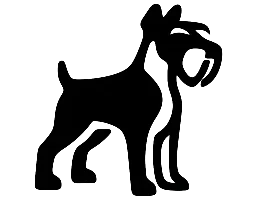How to Train a Schnauzer Puppy: 7 Tips for First-Time Owners
How to Train a Schnauzer Puppy: Bringing home a Schnauzer puppy is one of the most exciting experiences a dog lover can have. Whether you’ve chosen a Miniature, Standard, or Giant Schnauzer, one thing is certain these intelligent and spirited dogs need proper training from the very beginning.
Schnauzers are known for their loyalty, energy, and sharp minds. But their cleverness can also make them a little stubborn if they aren’t guided early. As a new owner, learning how to train your Schnauzer puppy will set the foundation for a happy, well-behaved, and confident companion.
In this guide, we’ll cover 7 essential tips for first-time Schnauzer puppy owners to help you succeed in training while strengthening the bond with your new furry friend.
1. Start Training Early
The earlier you begin, the better. Training should start the moment your Schnauzer puppy comes home usually around 8 to 10 weeks old. Puppies are like sponges during these first few months, absorbing lessons quickly.
Focus first on the basics:
- House training (potty training and crate training)
- Simple commands like sit, stay, and come
- Getting used to their name
Consistency and patience will help your Schnauzer learn quickly. Remember, they are naturally intelligent dogs that thrive when given structure and routine.
2. Use Positive Reinforcement
Schnauzers are highly food- and praise-motivated. Instead of scolding, focus on rewarding good behavior. Positive reinforcement builds trust and encourages your puppy to repeat the behavior you want.
Ways to reward your Schnauzer puppy:
- Treats (small, healthy training treats work best)
- Verbal praise (“Good boy!” or “Good girl!”)
- Petting and affection
- Playtime or toys
Avoid harsh corrections, as Schnauzers are sensitive and may become anxious if treated too strictly.
3. Socialize Early and Often
Schnauzers are naturally protective and alert. Without proper socialization, this can lead to excessive barking or shyness around strangers.
Expose your puppy to a variety of:
- People (children, adults, guests)
- Places (parks, sidewalks, pet-friendly stores)
- Experiences (car rides, grooming sessions, vet visits)
- Other pets and dogs
The more positive experiences your Schnauzer has early on, the more confident and well-adjusted they will be as adults.
4. Be Consistent with Commands
Schnauzers are smart enough to understand commands quickly, but they can also test boundaries. Consistency is key.
For example:
- If you say “off” when they jump on the couch, make sure everyone in the family uses the same word.
- Avoid confusing your puppy with multiple phrases for the same action (like “come here” vs. “come”).
Consistency helps your Schnauzer recognize patterns and expectations, which makes training smoother and faster.
5. Keep Training Sessions Short and Fun
Schnauzers are energetic but have short attention spans, especially as puppies. Instead of long training marathons, aim for:
- 5–10 minute sessions
- 3–4 times a day
Mix training into playtime and daily activities. For example, ask your Schnauzer to “sit” before putting down their food bowl or to “stay” before opening the door. These small lessons add up quickly.
6. Teach Bite Inhibition and Chewing Control
Like many puppies, Schnauzers explore the world with their mouths. Teaching bite inhibition (gentle play) early is crucial.
Tips to handle biting or nipping:
- Redirect to a chew toy if they bite your hands.
- Stop play immediately if biting becomes too rough.
- Provide plenty of safe chew toys to satisfy teething needs.
This not only prevents bad habits but also makes grooming and vet visits easier in the future.
7. Exercise Their Body and Mind
A bored Schnauzer is a mischievous Schnauzer. These dogs were bred as working dogs and need plenty of stimulation. Training is not just about obedience it’s also about channeling their energy.
Ways to keep your Schnauzer engaged:
- Daily walks and playtime
- Puzzle toys or treat-dispensing toys
- Obedience games like “find it” or “hide and seek”
- Teaching new tricks regularly
Mental exercise is just as important as physical exercise. A tired Schnauzer is a happy, well-behaved Schnauzer.

How to Train a Schnauzer Puppy : Common Training Challenges with Schnauzers
Even with the best approach, Schnauzer puppies may test your patience. Some common challenges include:
- Barking: Schnauzers are natural watchdogs and love to alert. Training them with “quiet” or redirecting with toys can help.
- Stubborn streaks: Their intelligence sometimes makes them independent. Staying consistent and patient is the solution.
- Potty training accidents: Stick to a routine, use crate training, and reward success immediately.
Remember patience and consistency always pay off.
Final Thoughts: Building a Strong Bond Through Training
Training your Schnauzer puppy isn’t just about teaching commands. It’s about building trust, creating structure, and helping your dog grow into a confident and loving member of your family.
By starting early, staying consistent, and making training positive, you’ll set the foundation for a lifetime of loyalty and companionship with your Schnauzer.
At The Schnauzer Spot, we raise our puppies in a loving environment that prepares them for their forever homes. If you’re ready to welcome a Miniature, Standard, or Giant Schnauzer into your life, check out our Available Puppies today.
